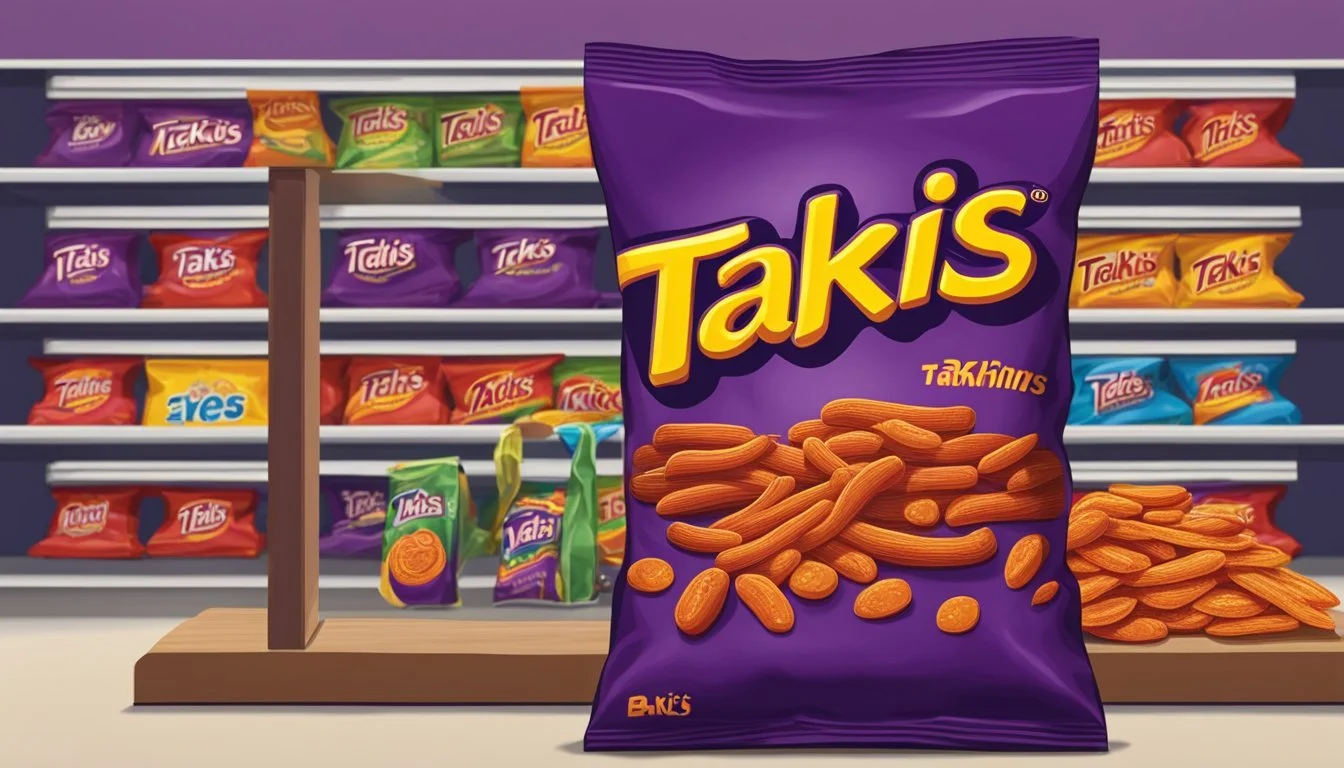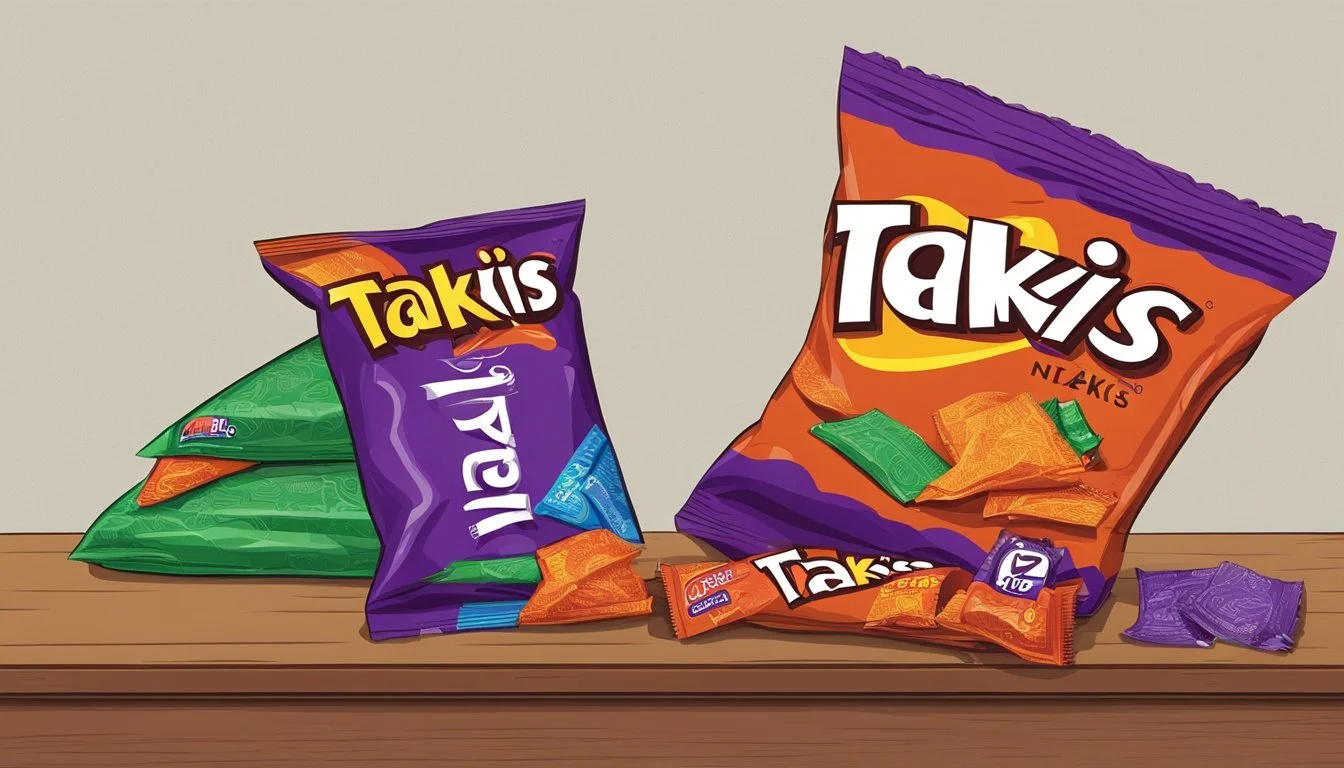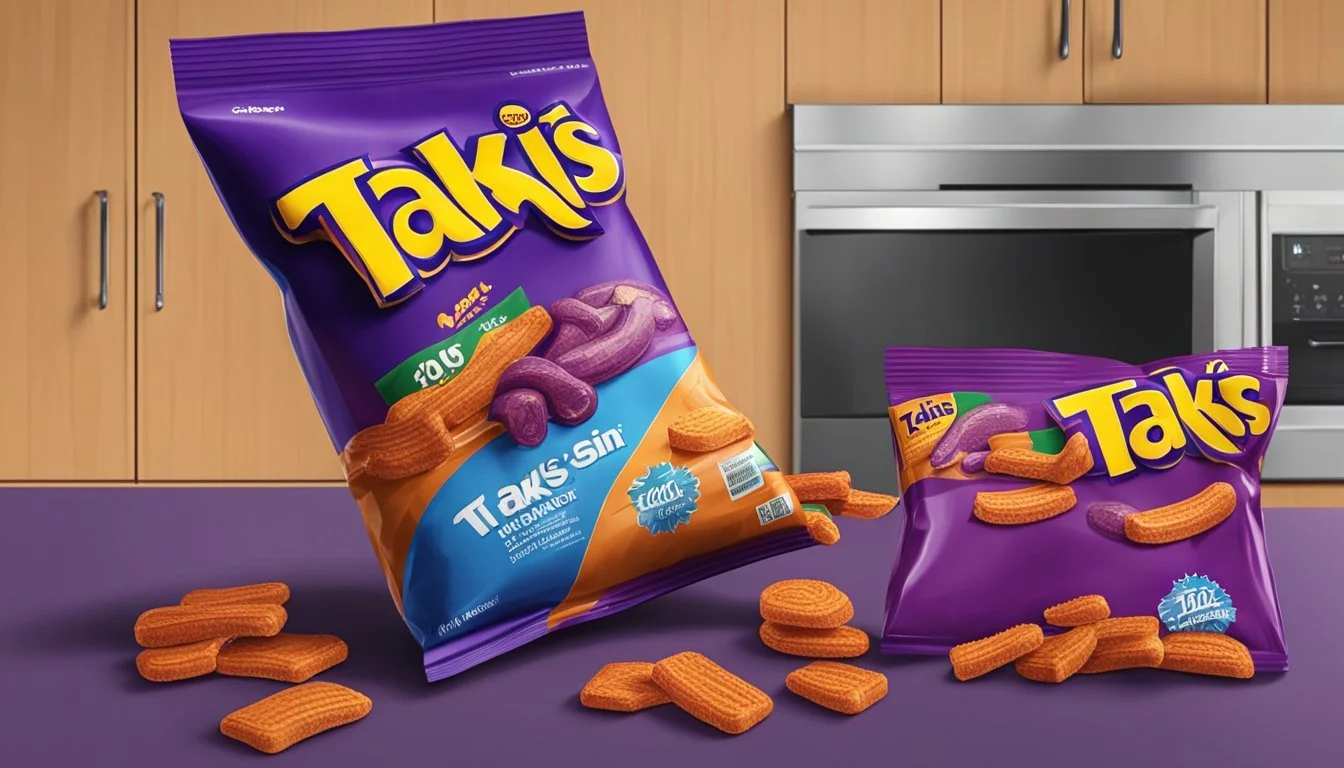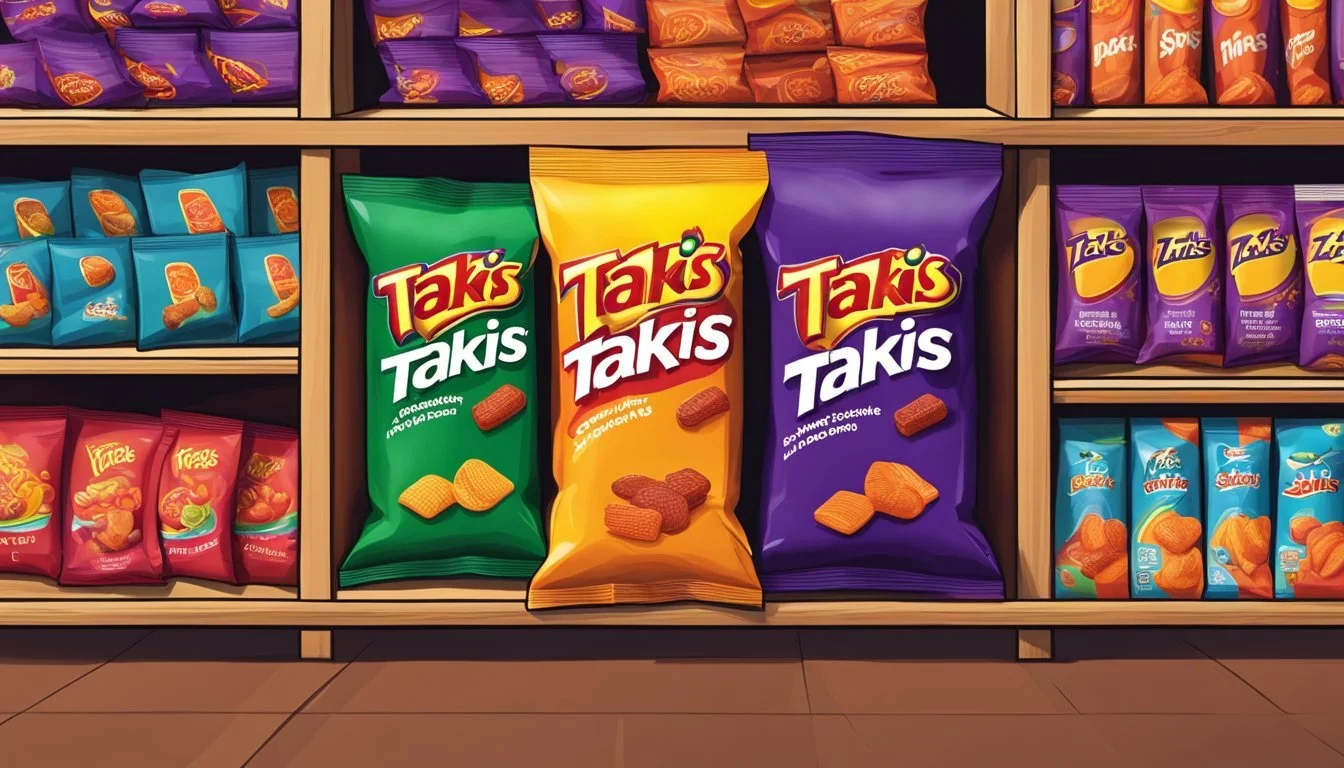Exploring the Shelf Life of Takis: How Long Do They Last?
Understanding Snack Expiry Dates
Takis (how long does takis last?) are a popular spicy rolled corn tortilla snack known for their distinctive heat and crunch. Consumers often wonder about the shelf life of Takis and how long they can enjoy them at their best quality. Typically, in an unopened state and when stored properly, Takis can maintain their freshness from three to six months. The longevity largely depends on factors such as the seal integrity of the packaging and the conditions in which they are kept.
Once opened, Takis are best consumed within a month to ensure their optimal taste and texture. Exposure to air and moisture after opening can accelerate staleness and potential loss of flavor. To maximize their shelf life once opened, storing them in an airtight container is advised. It's important to note that while Takis can be safe to eat after the expiration date, their overall quality regarding taste and texture may decline, so it's recommended to consume them within the advised time frame for the best snacking experience.
What Are Takis?
Takis are a popular brand of rolled corn tortilla chips known for their intensity and bold flavors. This snack has garnered a considerable following due to its unique shape and vibrant taste profile.
Origins and Brand Information
Takis chips are produced by Barcel, a subsidiary of the Mexican company Grupo Bimbo. First introduced in the Mexican market, Takis quickly gained popularity and expanded into the United States and other international markets. The brand is especially recognized for its signature rolled shape, emulating the traditional Mexican taquito.
Ingredients and Flavors
The primary ingredient in Takis chips is corn, which is used to create the crunchy tortilla base. They are notable for their spicy seasoning that coats each chip. Among the range of flavors, the most iconic is Takis Fuego, which features a hot chili pepper and lime taste. Other popular flavors include:
Takis Nitro: Combining habanero and lime for a fiery twist.
Takis Blue Heat: Known for its intense heat with a touch of sweetness.
Takis Crunchy Fajitas: Offers a milder, savory flavor reminiscent of fajitas.
Takis Guacamole: Merges the creamy taste of guacamole with the trademark Takis zest.
Takis Xplosion: A cheesy and chili pepper flavor that provides a zesty explosion with every bite.
Takis chips are often enjoyed by those seeking a flavorful and crunchy snack with a kick of heat, catering to a variety of taste preferences through their diverse flavor line-up.
Nutritional Information
This section outlines the caloric and macronutrient content of Takis and the health considerations one should bear in mind when consuming this snack.
Caloric and Macronutrient Content
Takis are a type of rolled corn tortilla chip that is known for its bold flavors and spice. The specific caloric and macronutrient content can vary by flavor, but generally, a serving of Takis (about 1 ounce or 28 grams) contains the following:
Calories: Around 140 to 150
Fat: Approximately 7 to 8 grams
Sodium: Between 200 and 300 milligrams
Protein: Roughly 2 grams
Fiber: Typically less than 1 gram
It is important to check the packaging for information relevant to specific flavors and batch variances.
Health Considerations
Takis provide minimal nutritional value in terms of essential vitamins and minerals. The snack typically does not contribute significantly to an individual's daily intake of vitamins or minerals. However, due to the high levels of sodium and fat, they should be consumed in moderation. Excessive consumption of snacks (What wine goes well with snacks?) high in sodium and saturated fats can be associated with an increased risk of heart disease, type 2 diabetes, and obesity, which are major health concerns.
Takis, like similar snack foods, are meant to be enjoyed occasionally as part of a balanced, healthy diet. They are not a substitute for nutrient-rich foods that provide the fiber, protein, vitamins, and minerals necessary for optimal health.
Preservation and Storage
When it comes to preserving the freshness and extending the shelf life of Takis, understanding the role of proper storage practices is critical. An awareness of the factors influencing shelf life and adherence to best storage methods ensures that Takis retain their intended taste and texture.
Shelf Life Determinants
Unopened Takis typically have a shelf life of up to 6 months when kept in ideal conditions. Several variables impact how long Takis remain fresh after opening:
Climate: A moderate, dry climate is conducive to longer shelf life.
Exposure: Direct sunlight or heat can shorten shelf life.
Sealing: Proper sealing minimizes exposure to air and moisture, key culprits in reducing freshness and inviting microbial contamination.
Best Practices for Storage
To maintain quality and extend the life of Takis, whether opened or unopened, the following storage tips should be observed:
Location: Store Takis in a cool, dry place, away from direct heat or sunlight.
Container: For opened Takis, transfer to an airtight, sealed container.
Refrigeration: While not necessary, if extreme temperatures are a concern, Takis can be placed in the fridge, although this is not standard practice.
Freezer: Freezing is an option to further extend shelf life; however, it might alter texture upon thawing.
By adhering to these guidelines, Takis can remain safe to eat and retain their distinctive crunch and flavor for an extended period. Opened Takis should be consumed within a month for optimal freshness, but if properly stored, can last up to 3 months. Consuming expired Takis may lead to a reduction in quality, but if they have been stored correctly and show no signs of spoilage, they may still be safe to consume shortly after the expiration date.
Consumption Guidelines
When considering the consumption of Takis, it's crucial to understand how to identify spoilage and ensure safety. This will help prevent the intake of stale or potentially harmful snacks.
Identifying Spoilage
Spoilage in Takis can be detected by a noticeable change in texture and flavor. A fresh bag of Takis maintains a crispiness and a vibrant spicy taste. When they become stale, their texture loses crispness, becoming chewy or hard. Flavor-wise, stale Takis may have a muted or off-taste compared to their original piquant zest. Additionally, one should inspect the bag for any visible signs of bacteria growth such as mold, which rarely occurs if the bag is unopened.
Consumption Safety
Consuming Takis past the best-before date can lead to a subpar snacking experience due to diminished flavor and crispiness. Although eating Takis a short period past this date may not necessarily pose an immediate health risk, one should be cautious as the chance of developing foodborne illness increases over time. If the Takis smell unusual or show signs of spoilage, they should not be consumed to avoid potential health risks. It's essential to store Takis in a dry, cool environment to maintain their quality and minimize the risk of consuming spoiled or unsafe snacks.
Health Implications
Takis are a popular spicy snack that, while enjoyed by many, may come with health implications particularly when consumed in large quantities or as a regular part of one's diet. This section explores the potential health risks and dietary impact associated with Takis consumption.
Potential Risks
Consuming high quantities of Takis may expose individuals to certain health risks. The spicy nature of Takis can lead to gastritis, a condition characterized by stomach lining inflammation, and can exacerbate conditions like irritable bowel syndrome (IBS). They might also induce bouts of heartburn due to the high acidity, sometimes escalating to acid reflux, where stomach acid irritates the esophagus. This irritation can cause discomfort, presenting as nausea or even vomiting.
The high sodium content in Takis is another concern, as it can contribute to high blood pressure, which is a risk factor for heart disease. Their high calorie and fat content, when not balanced with an otherwise healthy diet and physical activity, may also contribute to obesity and related conditions, such as type 2 diabetes.
Dietary Impact
Takis' nutritional profile is marked by high levels of calories, fat, sodium, and carbohydrates. However, these snacks lack essential micronutrients and may lead to nutrient deficiencies if they displace more nutritious food options in the diet. Over time, consistent intake of nutrient-poor, high-calorie snacks like Takis can be detrimental to overall diet quality, potentially contributing to long-term health issues such as diabetes and obesity.
The absence of dietary fiber in Takis may also have implications for digestive health. Fiber is essential for bowel regulation and health, and its absence can aggravate symptoms in individuals with conditions like IBS. Moreover, balanced diets are vital for managing blood pressure and reducing the risk of chronic diseases, and Takis offer little to no benefit in this regard.
Alternative Snack Options
Consumers seeking to satisfy their cravings for spicy snacks like Takis have a variety of healthier alternatives at their disposal, which can contribute to a balanced diet.
Healthier Substitutes
For those who enjoy the kick of spice but want to maintain a healthy diet, options such as vegetable chips, air-popped popcorn, and roasted chickpeas (how long do roasted chickpeas last?) offer a crunchy snack with less guilt. Specifically, kale chips and seaweed snacks provide nutrient-dense alternatives that still cater to the desire for something savory and crunchy. These snacks typically contain fewer additives and are low in sodium, making them beneficial for overall health.
Artisan Tropic Cassava Strips are a vibrant choice, delivering a taste reminiscent of tropical flavors and a satisfying crunch. They are gluten-free, making them suitable for individuals with dietary restrictions.
For a more fruit-based option, Barnana Organic Plantain Chips are a fitting selection. These chips are certified organic, kosher, and vegan, which aligns with various dietary principles and supports a considered approach to snacking.
Special Dietary Needs
Adhering to special dietary frameworks, like vegan or paleo-friendly diets, doesn't mean sacrificing flavor. Consumers can find spicy snack options that fall within these guidelines, offering a harmonious balance between healthful eating and flavorful enjoyment.
Vegan individuals might gravitate towards snacks that do not contain any animal products, ensuring that their spicy treat complies with their ethical and dietary choices. Labels indicating vegan certifying are crucial for these consumers.
Those following a paleo-friendly diet can opt for snacks that are made with simple, unprocessed ingredients. Look for snacks that are free from grains, dairy, and processed sugars to stay within paleo guidelines.
Bold flavors and health-conscious choices are not mutually exclusive. With the right substitutes, it is entirely possible to enjoy a spicy, satisfying snack that contributes to a balanced diet.
Other Related Topics
When discussing the longevity and effects of Takis, it is important to consider their place within the broader context of similar snack foods and their potential impacts on the human digestive system.
Comparison with Similar Snacks
Comparing Takis to other snacks such as potato chips, spicy nacho Doritos, (how long do doritos last?) and hot Cheetos reveals similarities and differences in shelf life and ingredient composition. For instance, spicy nacho Doritos and hot Cheetos are comparable to Takis in terms of crunchiness and spicy flavor profiles, but their shelf lives may vary due to different preservatives used. These snacks generally maintain their crispiness for a similar timeframe, typically:
Takis: 3-6 months unopened
Potato Chips: 1 month after the printed date unopened
Spicy Nacho Doritos: 3-4 months unopened
Hot Cheetos: 2-3 months unopened
Impact on Digestive System
Regarding the digestive system, one must be mindful that Takis and their snack counterparts are processed foods that can potentially irritate the stomach lining, leading to discomfort. The high level of spices in snacks like Takis may cause stomach pain or indigestion for some individuals. The body's response to such foods can include:
Stomach pain: Linked with high spice levels
Indigestion: Often correlated with the consumption of greasy, processed snacks
Consumers with sensitive digestive systems should approach these snacks cautiously as they can irritate the gastrointestinal tract.
Culinary Uses
Takis are known for their intense flavor and satisfying crunchiness. They serve not only as a snack but also as a versatile cooking ingredient. In this section, readers will learn to incorporate Takis into recipes and discover innovative food pairings.
Recipe Ideas
Takis-Crusted Chicken: One popular way to use Takis is to crush them into a fine powder and use them as a breading for chicken. This gives the meat a spicy and tangy outer layer that's packed with flavor.
Spicy Takis Guacamole: Incorporate crushed Takis into traditional guacamole for a unique texture and taste twist. The crunchiness of Takis provides a contrast to the creamy avocado dip.
Creative Food Pairings
Original Takis and Vegan Cheese: Pairing original Takis with a vegan cheese dip can cater to vegan dietary needs while still delivering a flavorful experience.
Takis and Fruit Salsa: Try pairing Takis with a fresh fruit salsa. The sweetness of the salsa will complement the spiciness of the Takis, creating a complex flavor profile.
Sensory Experience
The sensory quality of Takis is a pivotal aspect of their appeal, with texture and flavor playing critical roles in the overall experience. They are known for their notably spicy taste, which is delivered through a variety of flavor profiles.
Texture and Crunch
Takis are recognized for their crispiness and crunch, which contribute significantly to their sensory appeal. Over time, the crunchiness may diminish, affecting the expected texture. This can be particularly noticeable if the chips are exposed to air or humidity after opening. The ideal crunch of Takis is described as both firm and satisfyingly brittle.
Optimal Texture:
Freshness: Fresh Takis should possess a distinct crunch that is audible upon biting.
Staleness: A notable lack of crispness and a more chewy texture indicate that Takis may be past their prime.
Flavor Profiles
The flavor of Takis is another distinctive aspect that defines its sensory experience. Fuego, one of the most popular flavors, features a bold, spicy taste that is both tangy and intensely peppery.
Flavor Characteristics:
Spicy: The heat level is impactful, lingering on the palate.
Depth of Flavor: Not just spicy, Takis also deliver a complex layering of flavors that can diminish as the product ages.
Maintaining Takis in a sealed environment helps to preserve these sensory qualities for the optimal enjoyment of the snack.
Shopping Tips
When purchasing Takis, consumers should focus on product freshness and understand the labeling to ensure they're getting the best quality for their money.
Selecting the Best Product
When shopping for Takis, a popular Mexican snack known for its bold spices, one should check the package for any signs of damage or tampering. An unopened package that is intact and sealed properly preserves the product's quality. Buyers should give preference to stores with high product turnover to increase the chance of purchasing fresher Takis.
Understanding Product Labels
It's essential to read product labels carefully. The expiration date is a crucial factor, as it informs consumers how much shelf-life the product has left. While Takis can last up to three to six months post the expiration date if stored properly, being able to interpret these dates correctly will ensure that the snack's flavors and quality remain up to standard. Here is what to look for on the label:
Best Before/Expiration Date: This date gives an indication of until when the product will maintain its best quality.
Manufacturing Date: Sometimes present, it can be used to gauge the age of the product.
Understanding these labels can guide consumers to make informed choices and enjoy their Takis when they are the most flavorful.
Environmental and Ethical Considerations
When considering the production of Takis, one must consider the sustainability of the ingredients used and the corporate social responsibility practices of the company. These factors are essential for the informed consumer.
Sustainability of Ingredients
Preservatives: Takis have a long shelf life, partly due to the preservatives used. The production and use of these preservatives are subject to regulatory standards aimed at minimizing environmental impact, yet their synthesis and disposal raise environmental concerns.
Vegetable Oil: Takis contain various types of vegetable oils, including coconut oil, which is appreciated for its flavor. The sourcing of coconut oil can impact ecosystems and local communities. Ideally, oils should be obtained through sustainable means with minimal deforestation and exploitation.
Corporate Social Responsibility
Companies in the food industry, including those producing Takis, are increasingly evaluated based on their ethical practices and contributions to social issues. They are expected to maintain ethical labor practices, engage in fair trade, and contribute to communities. The use of energy-efficient methods and responsible sourcing are also crucial aspects of corporate social responsibility that companies must address.
Frequently Asked Questions
In this section, readers will find concise answers to common questions regarding the shelf life and expiration details of Takis.
General Inquiries
Do Takis expire?
Yes, they do. Similar to most snack foods, Takis come with an expiration date provided by the manufacturer to indicate how long they maintain their best quality.
What is the shelf life of Takis?
In their unopened, original packaging, Takis typically last between three to six months. It's important to note that this shelf life can be affected by storage conditions.
Specific Concerns
How can one read the expiration date on Takis packages?
Expiration dates are usually stamped on the packaging and can be read directly. The date format may vary, but it generally includes a day, month, and year.
What factors affect the shelf life of Takis?
The shelf life can be influenced by several factors including exposure to air, moisture, and storage temperature. To maximize longevity, keeping them in a cool, dry place is ideal.














